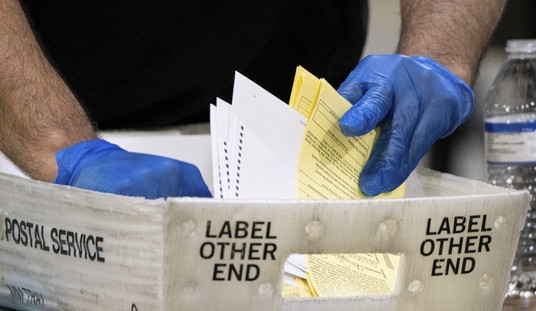If you believe the Environmental Working Group’s latest “study,” your drinking water might be contaminated with dangerous levels of a chemical that the group has conveniently dubbed the “Erin Brockovich chemical” — aka chromium-6. By hyping risks and by capitalizing on Hollywood sensationalism created by the 2000 film Erin Brockovich, the group has begun to build pressure for expensive regulations that could drain the already strained budgets of small towns and cities across America.
EWG’s “study” has captured headlines, the attention of policymakers on Capitol Hill and at the Environmental Protection Agency, and it is the subject of hearings before the Senate Environment and Public Works Committee this week.
EWG claims to have found harmful levels of hexavalent chromium (aka., chromium-6) in the drinking water of 35 U.S cities, and it is calling for swift federal regulatory actions. The group timed their study to coincide with the Environmental Protection Agency’s (EPA) routine review of its drinking water standard for chromium — but the EPA review doesn’t support EWG’s claims.
The evidence of significant risk from chromium in U.S. drinking water is weak. EPA’s draft risk assessment on chromium-6 (September 2010) states, “The epidemiologic data are not sufficient to establish a causal association between exposure to hexavalent chromium by ingestion and cancer.”
It is true that some studies have linked chromium-6 to lung cancer among workers who inhaled high levels of chromium-6 over a relatively long time period, but those studies are not very relevant to ingestion of trace levels in drinking water.
Still, EWG says the chemical is dangerous because it has produced tumors in rodents. But those studies, which were conducted by the National Toxicology Program in 2007 and 2009, involved rodents that ingested relatively high levels — between 5,000 to 180,000 parts per billion — of the chemical in drinking water over two years, a long time frame in the life of a rat.
These very high, long-term exposures of rodents to chromium tell us little about impacts on humans who are periodically exposed to levels that are thousands of times lower. For example, the amounts of chromium-6 that EWG found in U.S. drinking water averaged at just 0.18 parts per billion, with the highest rate of 12.9 parts per billion in Norman, Oklahoma.
EWG exclaims that the levels in Norman are “200 times” higher than a proposed California standard — as if that warrants panic. But the proposed standard in California is absurdly low at 0.06 parts per billion. EPA’s safe level for total chromium is 100 parts per billion.
EWG dismisses EPA’s total chromium standard, saying: “EPA has not set a legal limit for hexavalent chromium [chromium-6] in tap water nationally and does not require water utilities to test for it.” In reality, EPA’s standard for total chromium assumes that all chromium found in drinking water samples is chromium-6, according to a recent EPA press statement. In other words, the standard deems water containing up to 100 parts per billion of chromium-6 as safe to drink, and regulations ensure levels do not exceed that amount.
Despite these realities, the EWG scare campaign has gained many headlines in part because of chromium-6’s notoriety from the film, Erin Brockovich. It featured Julia Roberts as a sassy legal secretary who pushes her boss to sue Pacific Gas & Electric (PG&E) for contaminating the drinking water of the small town of Hinkley, California. Based on a true story, the lawyers filed a class action lawsuit alleging that the company allowed chromium-6 to leach into the water and cause a cancer cluster.
However, like EWG’s claims, Brockovich’s case against chromium-6 didn’t hold water. If chromium-6 caused cancer in Hinkley, one would expect to find the specific types of cancers and exposures associated with the chemical. As noted, studies have found associations between chromium-6 and two types of cancer — lung and nasal — among workers who inhaled large amounts. Yet Hinkley did not suffer from an elevated number of lung or nasal cancers, and residents were exposed to much lower levels by ingestion rather than inhalation.
Instead, the bulk of Hinkley plaintiffs had a number of different unrelated aliments — breast cancer, prostate cancer, arthritis, the flu, and club feet — likely caused by a variety of different sources rather than a single chemical, let alone chromium-6.
Moreover, researchers have never found evidence of any kind of cancer cluster in Hinkley. Recent research has again confirmed that cancer rate for the area is actually lower than that of other, similar areas.
Nonetheless, because the company didn’t want to continue a protracted legal battle, it settled with 650 litigants for $333 million. The trial lawyers took $133 million of the winnings off the top and gave Brockovich $2 million.
If EPA imposes an onerous chromium-6 standard because of activist pressures, public health benefits are likely to be zero. The compliance costs could be high, particularly for relatively poor, rural communities that have few resources to waste.









Join the conversation as a VIP Member